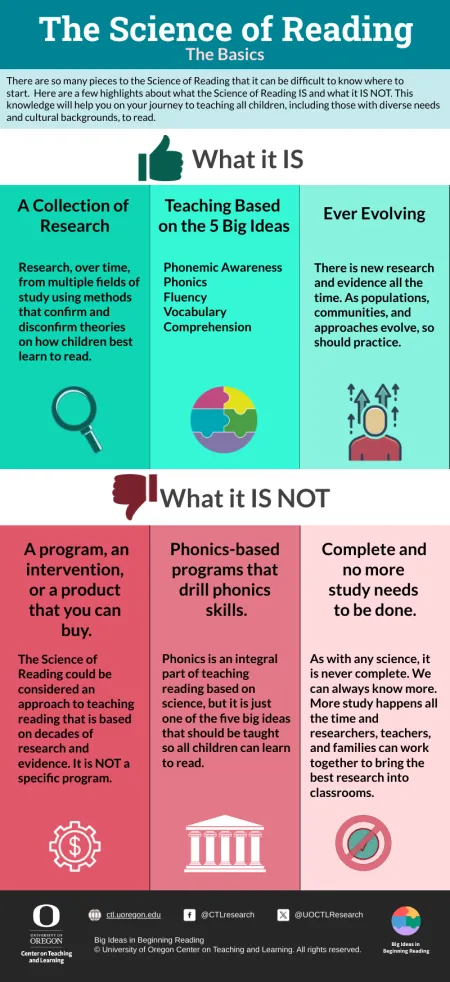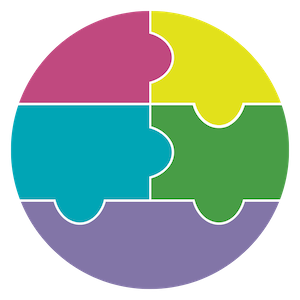The Big Ideas in Beginning Reading are phonemic awareness, phonics, fluency, vocabulary, and comprehension.
These five components form the foundation of effective reading instruction and are firmly grounded in the Science of Reading. This framework emphasizes the need for explicit and systematic instruction in each area, beginning in kindergarten. The components are interconnected and build upon one another, leading to the ultimate goal of skilled reading—strong comprehension.
Decades of research, including findings from the National Reading Panel, highlight the importance of teaching these essential elements through direct, intentional instruction.
5 Big Ideas

The ability to recognize and manipulate individual sounds in spoken words. Phonemic Awareness is a crucial precursor to reading and is entirely auditory, meaning it does not involve written letters.

Understanding the relationship between letters and sounds, and how to use this knowledge to decode (read) and encode (spell) words. Phonics instruction enables students to sound out words, making reading and spelling more automatic over time.

The knowledge of word meanings, including oral and written words. A strong vocabulary improves comprehension since readers can understand more of what they read. Learning, as a language-based activity, is fundamentally and profoundly dependent on vocabulary knowledge.

The ability to read text accurately, quickly, and with proper expression. A fluent reader can read a passage smoothly without struggling to decode each word. Fluency bridges decoding and comprehension—when students read effortlessly, they can focus more on understanding the text.

The ability to understand, interpret, and gain meaning from written text. Comprehension is the ultimate goal of reading.
Download Infographic
The Science of Reading
The Science of Reading is a vast, interdisciplinary body of scientifically-based research about reading and issues related to reading and writing. This research has been conducted over the last five decades across the world, and it is derived from thousands of studies conducted in multiple languages.
The Science of Reading – The Basics
There are so many pieces to the Science of Reading that it can be difficult to know where to start. Here are a few highlights about what the Science of Reading IS and what it IS NOT. This knowledge will help you on your journey to teaching all children, including those with diverse needs and cultural backgrounds, to read.
What it IS
A Collection of Research
Research, over time, from multiple fields of study using methods that confirm and disconfirm theories on how children best learn to read.
Teaching Based on the 5 Big Ideas
Phonemic Awareness - The ability to identify and play with individual sounds in spoken words.
Phonics - Reading instruction on understanding how letters and groups of letters link to sounds to form letter- sound relationships and spelling patterns.
Fluency - The ability to read words, phrases, sentences, and stories correctly, with enough speed, and expression.
Vocabulary - Knowing what words mean and how to say and use them correctly.
Comprehension - The ability to understand what you are reading.
Ever Evolving
There is new research and evidence all the time. As populations, communities, and approaches evolve, so should practice.
What it is NOT
A program, an intervention, or a product that you can buy.
The Science of Reading could be considered an approach to teaching reading that is based on decades of research and evidence. It is NOT a specific program.
Phonics-based programs that drill phonics skills.
Phonics is an integral part of teaching reading based on science, but it is just one of the five big ideas that should be taught so all children can learn to read.
Complete and no more study needs to be done.
As with any science, it is never complete. We can always know more. More study happens all the time and researchers, teachers, and families can work together to bring the best research into classrooms.


